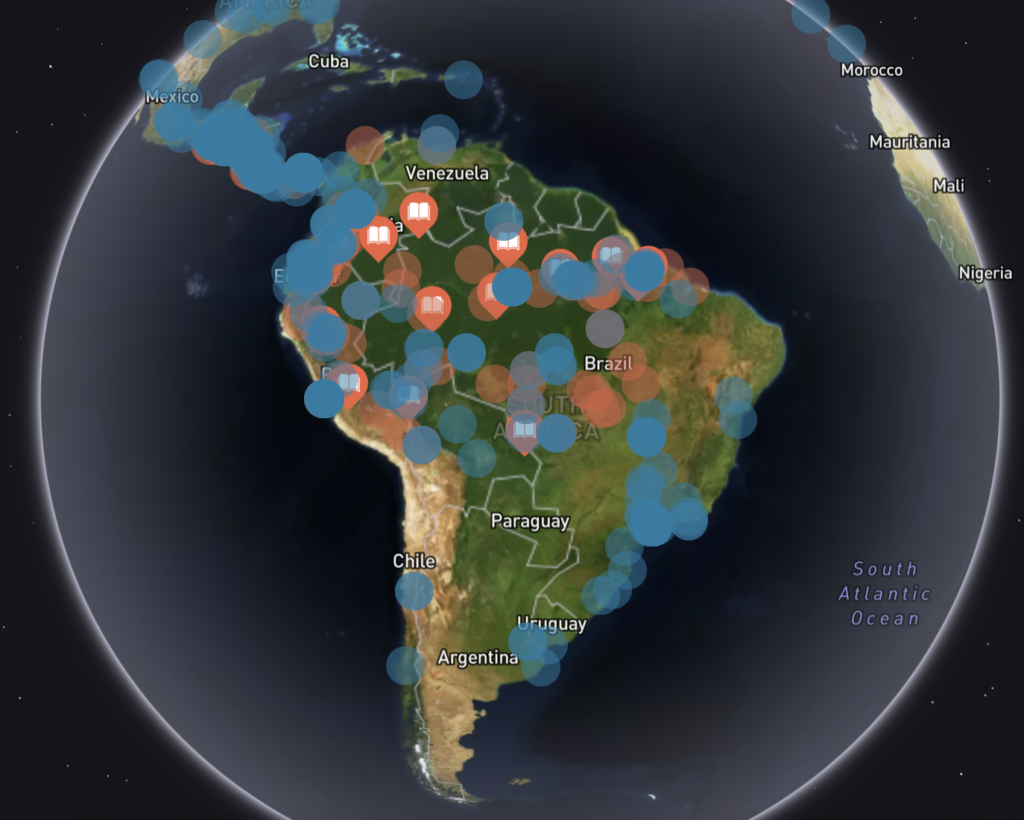Map of
businesses and actors
The map presented here is the result of a diagnosis carried out in the framework of the RFB project, with the objective of knowing the "state of the art" of food businesses with a regenerative approach and support actors that strengthen these types of businesses in the Amazon and Central American Dry Corridor.
With this, we seek to strengthen the RFB ecosystem, making visible the different experiences of our regions and, at the same time, allowing businesses to meet stakeholders who have the potential to contribute to their efforts.
If you are a business or actor, interested in being part of this map, click on the link below and access the registration form that will then be analyzed by the Consortium.
Filter Businesses
Filter Actors
Mapping with systematic and extensive search
7 keyword combinations
23.000 visited websites
50 key informants
Results: 181 businesses with regenerative potential found and 466 actors supporting this approach.
Although this mapping allows a first look at the “state of the art” of the NAR ecosystem in the region, we recognize that other experiences may not have been detected with the applied methodology. In this sense, we hope that soon we can include other initiatives and actors from the region, as well as from other regions of Latin America and the Caribbean.
Inclusion criteria
In this initial stage of the mapping, the initiatives that presented a potential regenerative approach have been included based on the analysis of their available information, in virtual networks or other types of open use media.
The general criteria that guided the analysis of the “narrative” used by these initiatives have been based on attributes and elements important to the consortium, within what we consider a “regenerative approach.”
Below, you can find out which criteria have been taken into account during the business analyses. This does not mean that the initiatives present on the map meet or are successful in all of the criteria described below.
- See how the business, in its proposal, addresses and gives importance to nature and conservation: from a paradigm transformation perspective? from a deep respect as a subject of rights? Is it something central in your media or something superficial, marginal? Or is it just another element to take into account?
- What types of conservation practices they carry out: how is their productive management or what types of agricultural systems do they implement. In other cases, what strategies for collecting and preserving forest products do they use? Or what types of actions the business promotes within the supply chain. In this context, it was also important to identify actions related to the circularity of the system; the potential impacts generated by their practices and how they address them; mimicry and other elements that within the Consortium's understanding represent positive points for regeneration.
- Investigate the history of the transition process of the farm, if it is in that phase (transition from a conventional extensive process to a regenerative one; or coexistence of the two models within the same property).
- Understand how they position their conservation actions and perspectives at the territory or landscape level. What the territory where you are, or with which you interact, was like in the past, what it is like in the present, and what you expect it to be like in the future.
- What is the sociocultural context in which it is framed: is it community-based or not? Is it a private company, small, large, corporation, cooperative, or what are the types of actors with which it relates? How do you coordinate with these actors to create the regenerative tissue? How the territorial approach of this articulation works and its scale (if it is beyond the farm).
- Understand whether the business has strategies to strengthen the gender focus or not. If it seeks to guarantee the adequate and necessary conditions to reduce the inequities experienced by women in the business or in the supply chains to which it is linked.
- Know how the business, directly or indirectly, promotes social inclusion and development/social justice of the people with whom they work and populations in their context. Understand how they address the focus on gender, youth, and integration of traditional, indigenous populations or other vulnerable groups.
- What types of markets does it target, if it has a local, regional, national or international impact. At what scale and how does the integration occur with other actors in the territory linked to the supply chain of the food promoted by the business, whether it is an “economy of care” that seeks to “regenerate” other points in the network or not.
- What types of financing or collaboration networks do they integrate; understand your level of dependence or independence from external support; if it is financially sustainable. What types of certifications it manages or strategies to achieve fair prices; how it manages the distribution of economic benefits in the chain.











